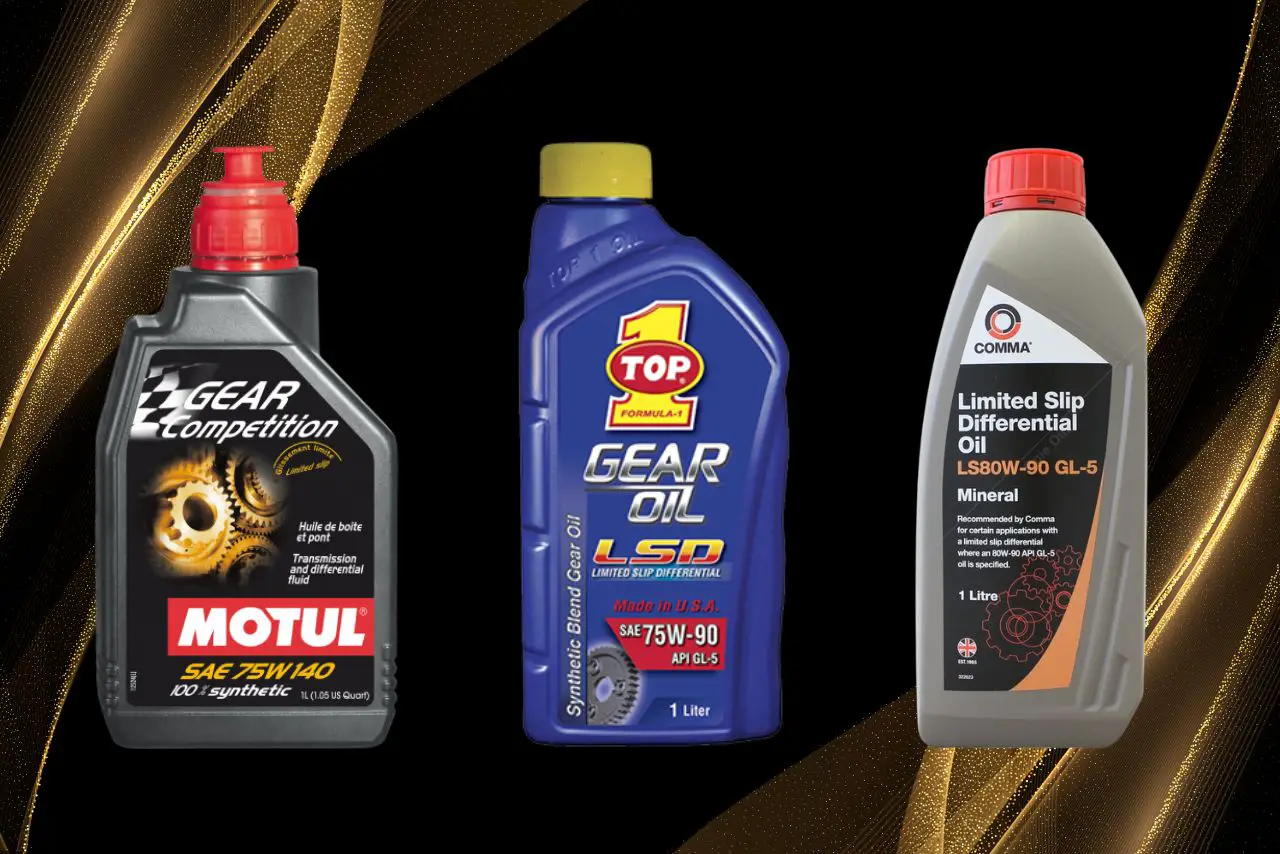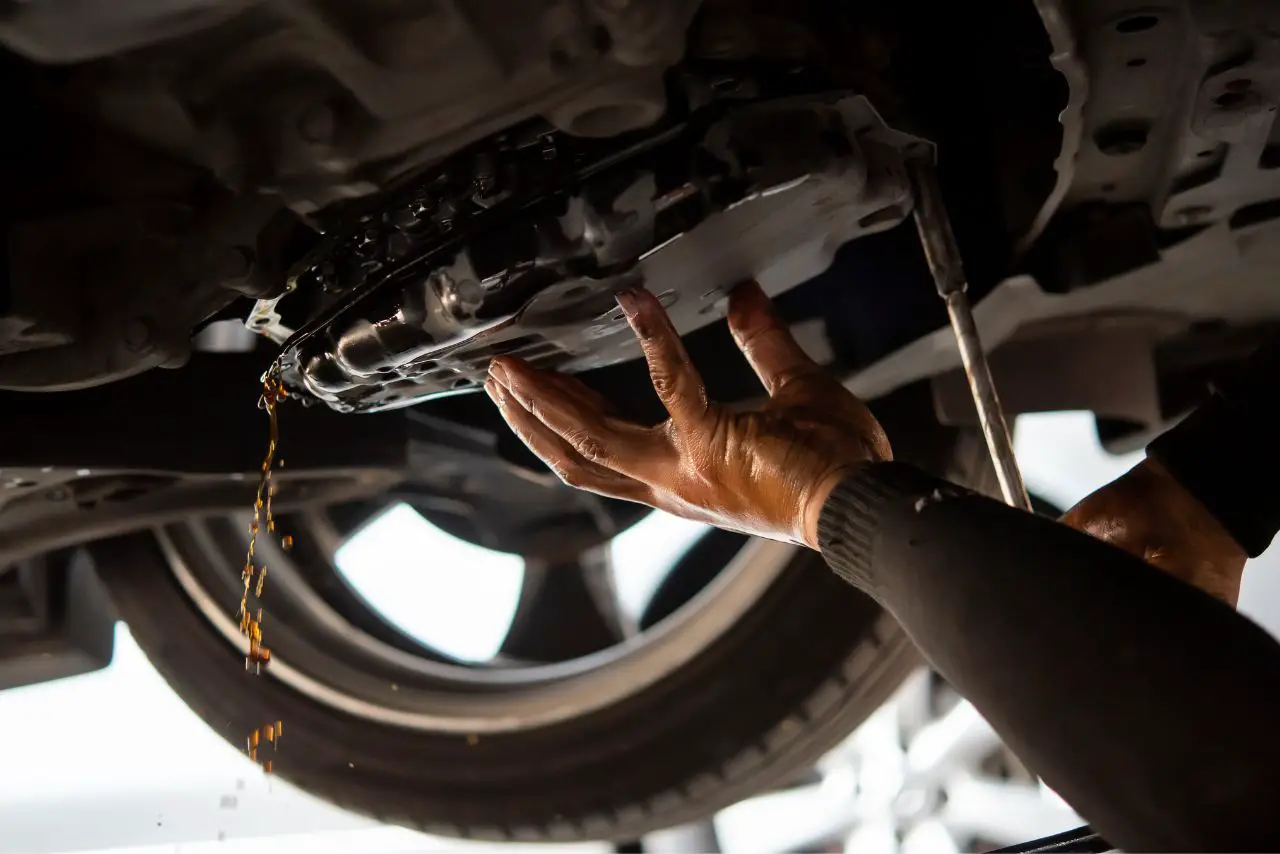Hey there, car owner. You’ve just spotted a puddle of oil beneath your vehicle and you’re worried that it’s a gearbox oil leak. Don’t panic just yet! A gearbox leak can be easily fixed if identified and addressed promptly.
But first, you need to know How to Stop Gearbox Oil Leak before it causes severe damage to your car’s engine or transmission.
Trust us, ignoring this problem will only make matters worse and more expensive in the long run.
In this article, we’ll discuss everything you need to know about stopping gearbox oil leaks so that you can get back on the road with peace of mind and a fully functioning vehicle!
A gearbox oil leak can cause damage to a car and should be addressed immediately. Gearboxes have separate oil from the engine to lubricate the gears.
Checking the level of gearbox oil can help determine if there is a leak. Worn seals or gaskets can cause leaks and should be replaced.
Cracks in the gearbox housing can also cause leaks and need to be repaired. Loose bolts can cause leaks and should be tightened.
Understanding Gearbox Oil Leak:
Understanding gearbox oil leak is crucial for maintaining your car’s health as it can cause permanent damage to the transmission.
The gearbox, also known as the transmission, has separate oil from the engine that lubricates the gears.
A leaking gearbox can create a pool of fluid beneath your car and cause a burning smell from the engine. It can also result in slipping gears or a grinding noise when you shift gears.
To determine if you have a gearbox oil leak, check your gearbox fluid level using the dipstick provided by the manufacturer. Low levels of fluid suggest that there may be a leak somewhere in your system.
Once you’ve identified that there is an issue, it’s essential to pinpoint where exactly on your vehicle that is occurring before attempting any repairs.
Symptoms Of Gearbox Oil Leak
If you suspect your gearbox has a leak, it’s important to look out for the following symptoms:
- A pool of oil beneath your car: If you notice an oil puddle where you park your car, this could be a sign of a gearbox fluid leak.
- Burning smell from the engine: Gearbox fluid leaking onto hot parts can create a burning odor.
- Slipping gears: Low fluid level in the gearbox can cause gears to slip or not engage properly.
- Grinding noise when shifting gears: This is often caused by low fluid levels or worn-out bearings.
If you notice any of these signs, it’s essential to check your gearbox fluid level and identify if there is indeed a leak.
Causes Of Gearbox Oil Leak:
There can be various causes that lead to gearbox oil leaks. Among the most common ones are damaged seals, gaskets or drive shafts, cracks in the housing of the gearbox and loose bolts.
In some cases, excess pressure inside or outside the gearbox due to unreasonable structural design can also lead you down this path.
One way to identify which one is causing your leak is by checking where exactly it’s coming from.
Worn Seals
Worn seals are a common cause of gearbox oil leaks and should be inspected regularly. Over time, seals can become brittle and cracked, which allows fluid to leak out.
If you notice leaking from the front or rear of the transmission where the drive shaft enters, it could be due to a worn input or output seal.
To check for worn seals:
- Park your car on level ground and engage the parking brake
- Locate the suspected area of leakage
- Use a flashlight if necessary to inspect for any signs of fluid accumulation around or below that area
- Check the fluid level in your gearbox; low levels may indicate a leak
If you determine that worn seals are causing your gearbox oil leak, they will need to be replaced.
Loose Bolts
Loose bolts can also be a common cause of gearbox oil leaks. When the bolts that hold the gearbox in place become loose, it can cause a gap between the gearbox and engine block, allowing oil to leak out.
To fix this issue, you will need to identify which bolts are loose and tighten them with an appropriate tool.
It’s important not to overtighten these bolts as it can lead to further damages on the transmission system.
Damaged Gasket
Another potential culprit of gearbox oil leaks is a damaged gasket. Like a worn seal, a damaged gasket can allow fluid to escape from the gearbox and cause leaks.
To identify if the gasket is causing the leak, you need to locate the source of the leak first.
Once you have identified that it’s coming from the gasket area, inspect it for any visible damage or signs of wear and tear.
If there are no visible signs of damage, try tightening any bolts around the gasket area as they may just be loose enough to cause leakage through gaps in between them.
If this does not resolve the issue, then replacing the faulty gasket may be necessary.
How to Stop Gearbox Oil Leak?
If you have identified a gearbox oil leak in your vehicle, it’s important to address it promptly. Ignoring the issue can cause damage to your car’s engine and transmission.
Here are some steps for how to stop gearbox oil leaks:
Step 1: Identify The Area Of Leakage
If you suspect that you have a gearbox oil leak, the first step is to identify the area of leakage.
Start by checking the level of gearbox fluid using the dipstick. If it’s low, then there’s likely a leak in your gearbox.
Next, park your car on level ground and let it run for a few minutes. This will allow any leaking oil to pool underneath your car, making it easier to locate the source of the leak.
Look under your car for signs of oil dripping or pooling on the ground.
Once you’ve identified where the leak is coming from, you can move onto repairing it.
Step 2: Repair The Leak
Once you have identified the source of the gearbox oil leak, it’s time to repair it. Here are two options for repairing a leaking gearbox:
Option 1: Use An Oil Leak Sealer
- Product Type :Auto Accessory
- Package Dimensions :7.25 L X6.25 W X9.25 H
- Country Of Origin :United States
- Package Weight :7.0Lbs
If you’ve identified the source of the leak and it’s coming from a worn seal or gasket, one option to consider is using an oil leak sealer. This can be a quick and easy temporary fix for minor leaks.
An oil leak sealer works by forming a seal around the damaged area, which prevents fluid from leaking out.
However, it’s important to note that this is only a temporary solution and should not be relied upon for long-term use.
When using an oil leak sealer, you’ll need to follow the manufacturer’s instructions carefully.
Typically, this will involve adding the product directly to your gearbox fluid and running your engine for a certain period of time.
Option 2: Replace The Faulty Components
If the oil leak is due to faulty components, it’s important to replace them as soon as possible.
The most common parts that tend to cause gearbox oil leaks are seals, gaskets, and drain plugs.
Input Shaft Seal
The input shaft seal is responsible for preventing gearbox oil from leaking out through the front of the transmission.
If you suspect a leak coming from this area, it’s important to address it as soon as possible.
To identify if the input shaft seal is causing the leak, check the fluid level in your gearbox and see if it has dropped significantly since your last check.
Also, look for signs of oil around the drive or engine side of your transmission.
If you determine that the input shaft seal is indeed causing the leak, there are a couple of options you can consider to fix it:
- Use an oil leak sealer specifically designed for fixing leaks in seals.
- Replace the faulty component by removing and replacing the old seal with a new one.
Gasket
If the source of your gearbox oil leak is a damaged gasket, replacing it is necessary to stop the leaking.
A faulty or worn-out gasket can cause fluid leakage and lead to serious problems with the transmission.
Gaskets are typically made of rubber or cork and over time, they can crack, shrink, or lose their elasticity due to age and heat exposure.
To replace a gasket:
- Drain all the oil from the gearbox
- Remove any bolts that hold components in place above the cover holding the gasket
- Remove all bolts holding gearbox cover plate in place
- Carefully remove old gasket without damaging anything nearby
- Clean both surfaces (gearbox housing and cover) thoroughly using brake cleaner
- Apply adhesive on one side of new gasket (opposite side from its seal) carefully so it won’t touch other surfaces.
- Carefully fit new gasket making sure not to damage anything else in future when removing it again for maintenance
Make sure you’re using an appropriate replacement for your specific model.
Drain Plug
- Improved design – this oil drain plug features a downward-facing drain hole to keep oil from splashing on chassis components during an oil change
- Convenient to use – once installed, the internal twist drain valve can be opened or closed with a screwdriver
- Easy to install – this part can be installed by hand in the original oil pan without tools
- Durable construction – made of high-temp plastic for reliable service and compatibility with the factory plastic oil pan on specified vehicle applications
- Ensure fit – to make sure this part fits your exact vehicle, input your make, model and trim level into the garage tool
One of the potential causes of a gearbox oil leak could be a loose or damaged drain plug.
It’s important to check the drain plug periodically to ensure it is secured tightly, and that there are no cracks or damage to the plug itself.
To check the drain plug, locate it on your gearbox. Check its appearance for any visible signs of damage, such as cracks or corrosion.
Then use a wrench to tighten it further if necessary.
If you notice any significant wear and tear on your drain plug, it’s best to replace it with a new one. This will prevent future leaks caused by an inferior or worn-out component.
Prevention Tips To Avoid Gearbox Oil Leak
Preventing gearbox oil leaks is important to avoid damage to your car and ensure it runs smoothly. Here are some tips that can help you prevent gearbox oil leaks:
- Regular Maintenance: Regularly inspecting and maintaining your gearbox will go a long way in preventing oil leaks. Check the drive shaft, fluid level, and other components regularly.
- Keep The Gearbox Cool: Overheating can cause seals to wear out faster, leading to oil leaks. Make sure the gearbox is properly ventilated and not exposed to high temperatures for prolonged periods.
- Use High-Quality Oil: Always use high-quality oil that is recommended by the manufacturer for your particular transmission type.
- Don’t Overfill The Gearbox: Overfilling the gearbox with too much fluid can lead to pressure build-up, causing seals to break or leak.
By following these preventative tips, you can reduce the risk of experiencing a gearbox oil leak in your car.
Regular Maintenance
Regular maintenance is critical to preventing gearbox oil leaks. Make sure to check the gearbox fluid level regularly and top it off if necessary.
If you notice any signs of leakage, such as a pool of oil beneath your car or a burning smell from the engine, address it immediately.
It’s also important to have your dealership or mechanic inspect the seals on a regular basis, so worn out or damaged seals can be replaced before they lead to bigger problems like gearbox failures.
Keep The Gearbox Cool
To prevent gearbox oil leaks, it’s important to keep the gearbox cool. Heat can cause seals and gaskets to wear out faster, leading to potential leaks.
To achieve this, make sure that the gearbox has adequate ventilation and is not exposed to extreme heat sources.
Also, avoid overworking your car by driving at high speeds for extended periods of time as this can generate excessive heat in the engine and transmission system.
Use High-Quality Oil
Using high-quality oil is crucial to maintaining a healthy gearbox and preventing leaks.
Cheap or low-quality oil can cause premature wear and tear on seals and gaskets, leading to leaks.
When selecting oil for your gearbox, it’s important to use the type of fluid recommended by the manufacturer.
Using the wrong type of fluid can cause damage to internal components of the gearbox and also contribute to leakage.
Don’t Overfill The Gearbox
Overfilling the gearbox can lead to a whole host of issues, including oil leaks. It’s important to check the fluid level regularly and make sure it’s at the correct level.
When you overfill the gearbox, it creates excess pressure inside that can cause seals to blow out and oil to leak.
This can also cause excessive foaming of the lubricant, which reduces its ability to protect your gearbox effectively.
To avoid overfilling your gearbox, make sure you follow manufacturer recommendations for adding oil or fluid.
Do not exceed these guidelines as doing so can have negative consequences on your vehicle’s performance and longevity.
Summary: How to Stop Gearbox Oil Leak?
A gearbox oil leak is a serious problem that should not be ignored. Checking the fluid level and driving carefully can help prevent leaks from occurring.
If you do notice symptoms of a gearbox oil leak such as slipping gears or grinding noises while shifting gears, it’s important to take action immediately.
Identifying the area of leakage is the first step in repairing a gearbox oil leak. From there, you can choose to use an oil leak sealer or replace faulty components such as seals, gaskets, or drain plugs depending on their condition.
Regular maintenance and using high-quality oil can also help prevent future leaks from occurring.
FAQs
What causes a gearbox oil leak?
A gearbox oil leak is typically caused by a worn seal, gasket, or o-ring.
How do I know if my gearbox is leaking oil?
Signs of a gearbox oil leak may include a smell of burning oil, visible oil residue, or an increase in engine noise.
What are the consequences of not fixing a gearbox oil leak?
If left unfixed, an oil leak can lead to engine damage and an increased risk of breakdown.
What is the best way to stop a gearbox oil leak?
The best way to stop a gearbox oil leak is to replace the worn seal, gasket, or o-ring.
Should I seek professional help for a gearbox oil leak?
Yes, it is best to seek professional help for a gearbox oil leak as it requires specialist knowledge and tools.




